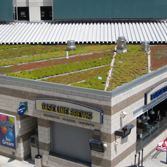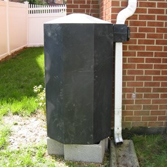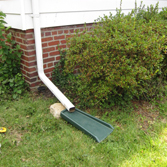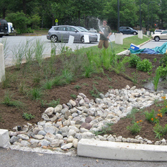Common Stormwater Retention Green Infrastructure Eligible for a Discount
This page describes the most common stormwater retention green infrastructure (GI) practices that are eligible for a RiverSmart Rewards discount. Visit RiverSmart to learn more about DDOE’s many financial and technical assistance programs available to properties that install these practices.
For a comprehensive list of eligible GI, consult DDOE’s Stormwater Management Guidebook, which refers to these practices as stormwater retention Best Management Practices (BMPs).
 Green Roofs
Green Roofs
Green roofs replace traditional roofing with a vegetated roof system. Green roofs are designed so that rain is absorbed by the plants and other growing media.
Rainwater Harvesting (cisterns, rain barrels, and rain tanks)
Rainwater harvesting is the process of collecting rainwater from impervious surface for future use. Harvested rainwater is often used for irrigation and other non-potable purposes, such as car washes, flushing of toilets, fire suppression sprinklers, supply for cooling towers, and laundry. When rainwater is harvested, it is conveyed through gutters or downspouts into above- or below-ground storage tanks called rain barrels or cisterns.
 Impervious Surface Disconnection
Impervious Surface Disconnection
Disconnecting roof downspouts and other impervious surfaces from the storm sewer drains means that there will be less stormwater runoff overloading the system during rain events. There are two kinds of disconnection permissible allowed in the District of Columbia:
1: Disconnection where a rooftop and/or on-site residential impervious surface is directed to an adjacent lawn or landscaped area (often called “simple disconnection”)
2: Disconnection leading to another GI practice, such as permeable pavement or bioretention
Permeable Pavement
Permeable pavement, or pervious pavers, allows water to seep around and through paved surface and soak naturally into the ground. It is a self-draining system constructed with various layers of gravel, rocks, and a filtering layer or infiltration sump.
 Bioretention
Bioretention
Bioretention systems capture and store stormwater runoff and pass it through a filter bed of engineered soil media composed of sand, soil, and organic matter. Rain gardens are a common example of bioretention.

